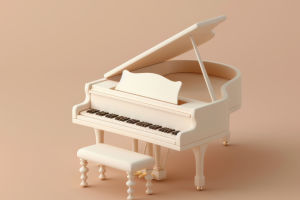The harp is one of the oldest and most elegant musical instruments in the world, with a rich history that spans thousands of years.
Originating in ancient Mesopotamia, the harp has evolved into various forms, each with its own unique characteristics and cultural significance!
Its delicate, ethereal sound has made it a favorite in both classical and folk music, and its role in orchestras, ensembles, and solo performances is well-established. The harp is typically made of a large, triangular frame with strings of varying lengths and thicknesses, which are plucked by hand to produce sound. The number of strings on a harp can range from a few dozen to over a hundred, depending on the type and size of the instrument.
The pitch of the string is determined by its length and tension, with longer strings producing lower notes and shorter strings creating higher pitches. Some modern harps also incorporate pedals or levers that allow the player to adjust the pitch of certain strings, making the instrument more versatile.
One of the most well-known types of harp is the concert harp, commonly seen in orchestral performances. This version typically has 47 strings and seven pedals, each controlling a group of strings to raise or lower their pitch by a semitone.
This allows the performer to play in various keys without having to retune the instrument manually. The harp is often associated with classical music, particularly with composers like Claude Debussy and Olivier Messiaen, who wrote pieces that highlighted its distinctive timbre.
In addition to the concert harp, there are also smaller, more portable varieties. The Celtic harp, for example, is often used in traditional Irish and Scottish music. This type of harp is usually smaller, with fewer strings, and does not have pedals. Instead, it relies on the player's finger technique and the natural tension of the strings to produce different notes.
The sound of the Celtic harp is softer and more intimate than that of its concert counterpart, and it is often played in folk settings, such as around campfires or in small gatherings.
In modern times, the harp continues to inspire musicians across genres. It can be found in both classical and contemporary music, as well as in pop and film soundtracks. Its distinct sound has been featured in movies like The Lord of the Rings, where it is used to evoke a sense of ancient mystery and majesty.
The versatility of the harp in these different musical contexts highlights its ability to adapt to various styles while retaining its timeless beauty. Learning to play the harp is often seen as a challenging but rewarding endeavor. The technique requires a combination of finger dexterity, hand-eye coordination, and an understanding of musical theory.
Unlike string instruments like the violin or guitar, the harp is played while the performer is seated, with the instrument resting on their shoulder and leaning against their chest. This unique position allows for a particular kind of expressiveness and physicality in performance, with the player using their whole body to interact with the instrument.
Despite its majestic sound, the harp is often considered a delicate instrument that requires careful maintenance. The strings must be tuned regularly, and the instrument itself must be kept in a stable environment, as humidity and temperature can affect its sound and structure. A well-maintained harp can last for decades, and in some cases, even centuries, with proper care.
As it evolves and adapts to the musical world around it, the harp remains a testament to the enduring power of music to connect humanity with the divine and the sublime!
The Beautiful Instrument - Quick Facts About The Harp
Video by Beat of Her Drum Education


